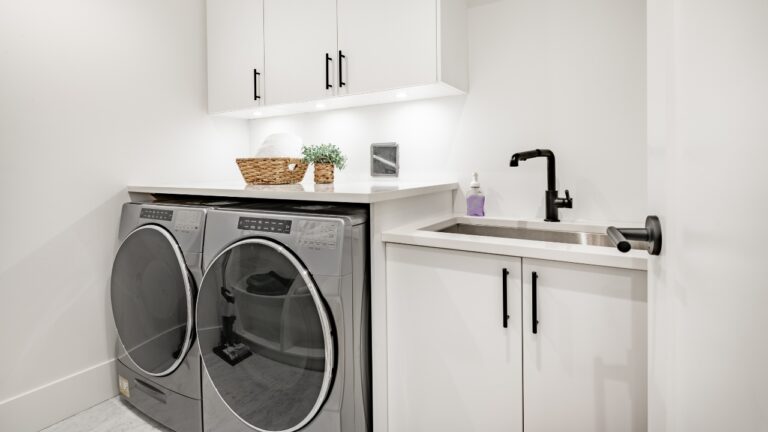What most people forget when setting up a long driveway
A long driveway seems pretty straightforward—gravel, grading, done. But once you live with it, you start to realize there’s a lot more that goes into keeping it functional and low-maintenance.
The length magnifies every small mistake, and what feels like a small decision during setup can turn into years of unnecessary work or expense. If you’re planning one, here’s what most people overlook until it’s too late.
Drainage determines everything
Water is the biggest threat to any driveway. Without proper grading and ditches, rain will wash out gravel, create ruts, and eventually erode the base. You need a crown in the center—higher in the middle and sloping toward the sides—so water naturally runs off. If the land’s already sloped, install a few culverts to guide runoff under the driveway instead of across it. Skipping drainage work almost guarantees you’ll spend every spring hauling in new gravel to fix washouts.
A solid base matters more than the surface
Gravel, asphalt, or concrete—none of it lasts if the base underneath isn’t compacted right. A long driveway needs several inches of compacted crushed stone beneath whatever top layer you use. That’s what keeps it from shifting, cracking, or developing low spots. It’s tempting to save money by skimping on the base, but you’ll end up paying more later when your surface starts falling apart.
You’ll need access for maintenance
If your driveway runs through trees or along a fence line, make sure there’s space for a dump truck, grader, or tractor to get through later. Even the best driveways need fresh gravel every few years, and if your layout doesn’t allow for equipment access, you’ll regret it. Leave room to widen turns or clear overhanging branches while you’re still in the planning phase.
The type of gravel you choose actually matters

All gravel isn’t the same. Round pea gravel rolls under tires and never stays put. For driveways, you want angular crushed rock that locks together when compacted. Many people also skip a smaller top layer—like quarter-minus—to help smooth the surface and fill gaps. The right mix means fewer potholes, less raking, and a cleaner look that stays in place longer.
Marking the edges saves you later
When your driveway is surrounded by grass or gravel shoulders, the edges can disappear fast. Adding small markers, edging stones, or even landscape timbers helps you stay on track when mowing or grading. It also protects your vehicles from running off into soft ground and keeps your gravel where it belongs.
Don’t forget where utilities go
If you plan to run power, water, or internet lines later, it’s much easier to lay conduit during driveway construction. Digging through compacted gravel or asphalt later is expensive and messy. Even if you don’t need utilities right now, adding empty PVC conduit gives you options down the road without having to tear everything back up.
A gate or culvert entrance changes the setup
If your driveway connects to a county road, check local regulations. You might be required to install a culvert at the entrance for drainage or position your gate a certain distance from the road. Skipping that step can lead to fines or having to redo your entrance after inspection. It’s better to get the specs before you start digging.
Lighting and visibility make a big difference

A long driveway can get dark fast, especially if it curves or slopes. Solar lights, reflective markers, or low-voltage fixtures along the edge make it safer at night and help delivery drivers see where they’re going. If you’re wiring a gate or motion sensor light, plan that conduit during installation so you’re not trenching later.
You’ll need a plan for snow, mud, and ruts
If you live somewhere with real winters or heavy rain, maintenance is non-negotiable. Gravel driveways need to be regraded at least once a year, and plowing too low can scrape away your top layer. Having a designated area for snow piles or extra gravel storage helps keep things manageable. For long drives, a box blade or land plane on a tractor is worth every penny.
The entrance sets the tone
Your driveway is the first impression of your property. A clean entrance, defined edges, and a sturdy gate or mailbox setup make it feel complete. It doesn’t have to be fancy—just intentional. Even a gravel drive can look high-end with clean grading, trimmed edges, and a visible crown that shows it was built right.
A long driveway is one of those projects where cutting corners always catches up to you. If you plan ahead for drainage, access, and maintenance, it’ll hold up for decades without constant repairs. Do it right once, and every trip home will feel worth it.
Like Fix It Homestead’s content? Be sure to follow us.
- I made Joanna Gaines’s Friendsgiving casserole and here is what I would keep
- Pump Shotguns That Jam the Moment You Actually Need Them
- The First 5 Things Guests Notice About Your Living Room at Christmas
- What Caliber Works Best for Groundhogs, Armadillos, and Other Digging Pests?
- Rifles worth keeping by the back door on any rural property
*This article was developed with AI-powered tools and has been carefully reviewed by our editors.







